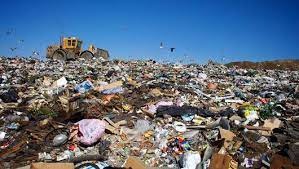Recycling Misconception

Photo source: Abdul Raheem/ EyeEm
January 26, 2023
When you recycle plastic, I’m sure you think it’s getting sent to a factory to be reused and transformed into a new product. Unfortunately, that is not the case. Only five percent of recyclable materials are actually recycled. According to studies made by environmental scientists, we are wasting a majority of recycled waste.
As the production of plastic rates rise, the actual recycling rates are dropping. Plastic is either shipped/transported, burned, or put in a landfill. As recycling was thought to be protecting the environment, we learn that, overtime, the environmental benefits of recycling has been altered, while the process has changed.
If you look here, you will find the US Recycling System Overview. It shows the steps our country takes to recycle. The process starts with collecting: Consumers or businesses generate recyclable materials that are collected by the government, or a “private hauler.” After that, the collected materials are processed. From the collector, the materials are sent to a processing facility. The recycled materials are sorted through, cleaned, and prepared for transport. They are sent to a “manufacturing facility,” where the materials are “remanufactured into new products.” But if your plastic isn’t lucky enough to make it there, it’s hurting more than helping. When plastic that is recycled cannot be remanufactured, it ends up in an incinerator, landfill, or washed up in the ocean. Many countries dispose of this remaining plastic by dumping it into the ocean.
As humans, we generate, use, and dispose of an astronomical amount of waste. Recycled waste that doesn’t end up in energy transfer stations usually ends up in landfills. These products contain lots of chemicals, such as phthalates and bisphenol A, which essentially poison the earth. Landfills are like dumping grounds, where waste is brought and buried under compacted soil. When landfills break down and decompose waste, it generates and produces methane, carbon dioxide, greenhouse gasses, and many other air pollutants and toxins. Plastic does not decompose, meaning all plastic that has ever been produced is still, and will always be present. These toxins are released into the atmosphere and highly affect air pollution and climate change.

When managing your waste, it leaves and conserves more room in landfills, which reduces the need to spawn new landfills. Click here to read 25 Easy and Simple Ways To Reduce Landfill Waste.
If trash isn’t going to a landfill, it’s going to an incinerator. Incinerators burn garbage into gas and ash. These gasses are strong air pollutants that have extremely negative effects on the environment. Incinerators release even more CO2 into the atmosphere than landfills do. Although they efficiently produce energy, they also produce these harmful gasses.

Why are Things This Way
Recycling is no longer a successful process due to contamination. Many people attempt to recycle non recyclable items, which leads to contamination. Read this article, to see how many of your everyday “recyclable items” are not actually recyclable. Many materials are very easily contaminated, when categorized in the wrong recycling bins. This later prevents even larger batches of material from being recycled, and quickly redirects it to a landfill or incinerator. Here are 14 Recycling Contaminations Facts that will blow your mind. The contents of this article reveals
How to Properly Recycle.
In order to properly recycle, you need to fully understand what you can and cannot recycle. There are many misconceptions about what you should be recycling, and what you should be throwing away with your garbage. Read this article to understand how to correctly dispose of your waste.
Recycling Rules/ Reducing your Waste
Instead of buying plastic/disposable items, you should be looking for as many reusable household items as you can. You should ALWAYS avoid purchasing single use food and drink containers. Reusable items are key in changing the recycling crisis. Reusable water bottles, grocery bags, straws, utensils, food wrap, and so many more products can be used to reduce your waste.
When disposing of food, compost what you can. Composting is an amazing way to dispose of your waste without harming the environment. The soil composting reduces the emission on greenhouse gasses, and helps fight climate change in many ways. like?
With recyclable items, it’s crucial and beneficial to reuse and repurpose your materials. There are so many more uses of recycled items every day than you think. Recycling should be your last resort when disposing of materials- especially plastic. Before recycling your plastic products, research new ways you can reuse them.
Benefits of Properly Recycling
When you properly dispose and recycle materials, you are benefiting the environment by reducing pollution, conserving natural resources and so much more. Recycling used to be seen as a perfect way to reduce your carbon footprint. It quickly got out of hand and became more and more harmful to the environment over time.
Unfortunately, most of the United States recycling programs have failed, and the industry has started to collapse. The lack of educating people on the proper way to dispose of recyclable materials has ruined the concept of something that could have been resourceful. The recycling industry must change a lot to the system in order for recycling to start working again. Citizens must change a lot in their daily routines for recycling to start working again.

Maximus Carducci • Feb 1, 2023 at 8:17 am
I think that you did a great job with explaining an extremely important topic that is disregarded by most people today. I also want to compliment your use of examples and research cited.